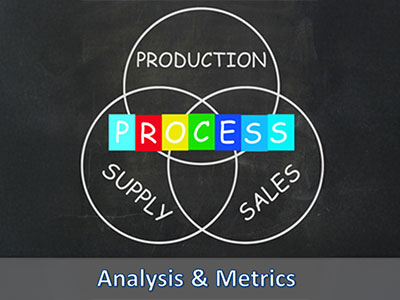Of all the overlapping metrics available to executives the best ones enhance SIOP (Sales Inventory Operations Planning), also known as S&OP and IBP (Integrated Business Planning) and offer the most vital information for running a business.
Which metrics are most crucial for SIOP? The simple answer is that it is those metrics most vital to running your business. In fact, once the SIOP process got into a groove, SIOP supplemented the budgeting process and certainly aided in tracking progress to the business on a proactive basis.
SIOP aligns not only demand with supply, but it also aligns the various business units and functional areas on one plan. At the high level, SIOP focuses on the following metrics:
- Sales forecast/ revenue plan – certainly one of the key elements of SIOP is to create a predictable revenue plan.
- Ability to fulfill the revenue plan – although it sounds far easier to do than it is to accomplish, SIOP provides the tools to ensure you can fulfill your revenue plan.
- Ability to fulfill the plan efficiently: simply fulfilling the plan will provide value for your customers; however, ensuring you are fulfilling the plan efficiently (profitably with good working capital).
From a detailed perspective, track the following metrics at a minimum:
- Inventory turns – how quickly you are turning your inventory will have a direct impact on cash flow and working captial.
- Service levels – this metric will measure how well you satisfy your customers from on-time delivery (OTD), complete orders (on-time-in-full, OTIF), etc. This is sometimes measured by the “perfect order”.
- Lead time – the shorter your lead times vs. competition, the more likely you’ll be able to grow sales, assuming all else equal.
- Margins – how well you have aligned demand with supply and optimized your supply chain inclusive of operations, planning, purchasing, distribution etc. will correlate directly to efficiencies and margins.
You might also track additional metrics such as customer and product profitability, product rationalization progress, new product introduction goals, make vs buy impact, offloading requirements, storage requirements etc.
In addition to these baseline metrics, it is important to also consider other metrics which can be important to your particular business or to your bottom-line results. These can include key customer performance, key customer sales vs. forecast, bookings, master schedule adherence, etc. Read more about SIOP metrics and how to roll the process out successfully in our book, SIOP (Sales Inventory Operations Planning): Creating Predictable Revenue and EBITDA Growth.
Start thinking about SIOP as a strategic priority, and dramatic results will follow.



